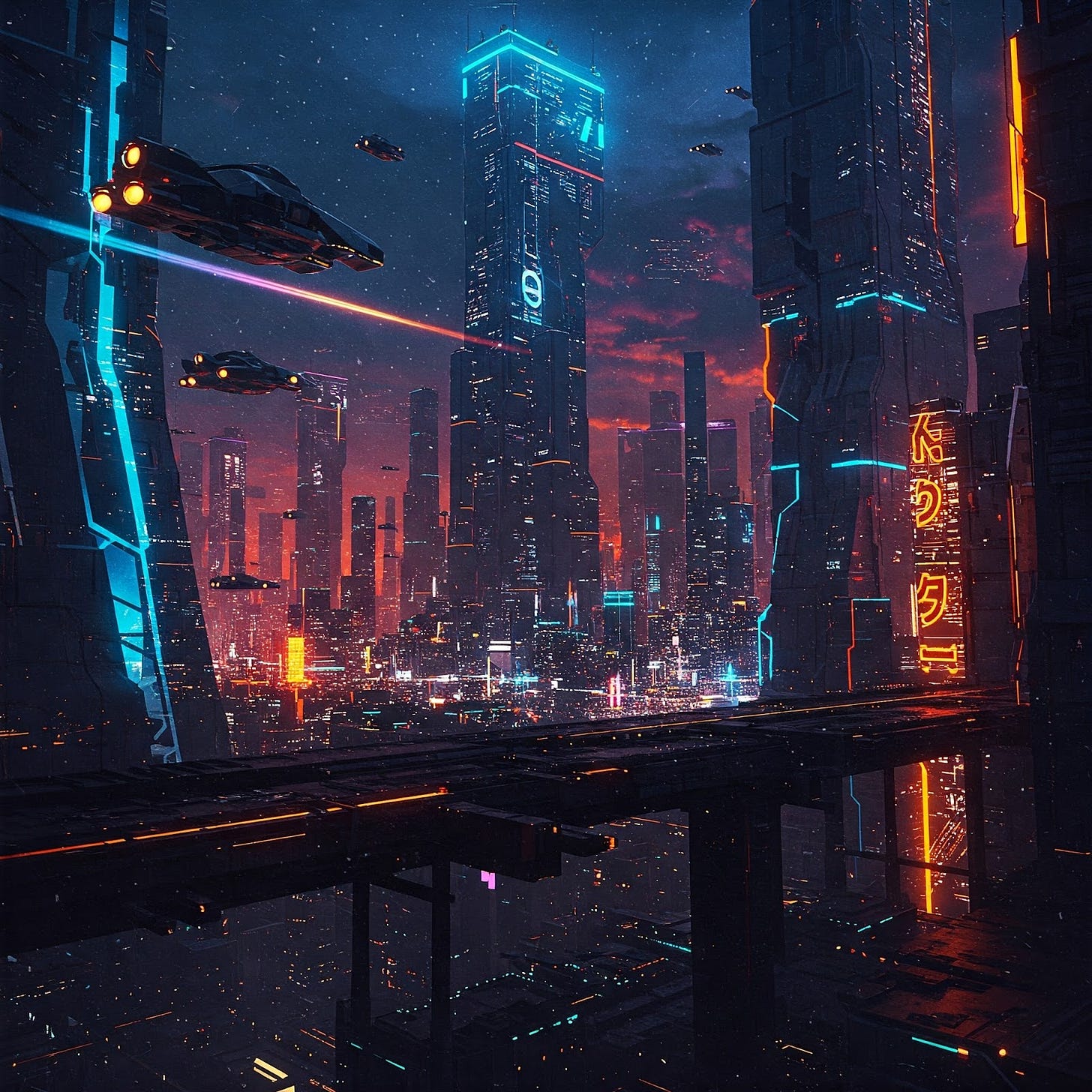Issue #107: The Board of Directors Debate: If Elon Musk, Steve Jobs, & Oprah Had to Rebrand ChatGPT—What Would They Do?
What If ChatGPT Had a Soul, a Vision, and Perfect Design?
Hey there, fellow AI adventurers! Welcome to the latest edition of "Chuck Learning ChatGPT," your friendly guide to the ever-expanding world of ChatGPT and Artificial Intelligence. This week, we're diving into everything from the latest updates to a hilarious boardroom showdown. So grab your favorite beverage, buckle up, and let's get started!
The Board of Directors Debate: If Elon Musk, Steve Jobs, & Oprah Had to Rebrand ChatGPT—What Would They Do?
ChatGPT’s Identity Crisis
ChatGPT is one of the most powerful AI tools ever created—but let’s be honest, it feels… soulless. It’s smart, but it lacks the emotional pull of an iPhone, the disruptive branding of a Tesla, or the inspirational magic of an Oprah moment. Right now, ChatGPT is just another tech tool. But what if it could be something much bigger?
The Lost Potential of AI
Imagine if OpenAI had the marketing genius of Apple, the future-forward mindset of SpaceX, or the emotional resonance of Oprah’s brand. ChatGPT could be more than just an assistant—it could be a movement. But without the right branding, it risks fading into the background as just another tech experiment. AI should feel revolutionary, personal, and indispensable. Instead, it feels like… software.
The Ultimate Rebrand
Now, picture this: Elon Musk transforms ChatGPT into Neural Nexus, a boundary-pushing AI companion designed to evolve with humanity. Steve Jobs reinvents it as AI, a sleek, intuitive assistant that blends seamlessly into your life. Meanwhile, Oprah introduces SoulAI, an empathetic, life-coaching AI that actually understands you.
Which vision wins? The disruptor, the designer, or the storyteller? 🤔 Let’s debate in the comments!
Updates and Recent Developments: The AI News You Need
Generative AI is revolutionizing materials discovery by addressing long-standing challenges in traditional methods. Here are the key benefits supported by recent research and applications:
Accelerated Discovery Timelines
Generative AI can reduce discovery timelines by 100x compared to conventional trial-and-error approaches3. For example:
Johns Hopkins APL's AI architecture generated 364 high-performing Metal-Organic Frameworks (MOF) candidates for carbon capture in just 5 hours6.
Georgia Tech's algorithm enables atom-by-atom reconstruction of materials, bypassing time-consuming experimental iterations1.
Cost and Resource Efficiency
AI-driven approaches:
Reduce material waste by predicting viable candidates computationally before lab testing5.
Cut experimental costs through high-throughput virtual screening (e.g., evaluating 120,000 MOF structures computationally)6.
Enhanced Design Creativity
Inverse design capabilities allow researchers to specify desired properties first (e.g., strength, conductivity) and let AI propose novel atomic configurations12.
Models like RAD-DINO (Mayo Clinic/Microsoft) demonstrate how AI can integrate multimodal data (text + images) to uncover non-intuitive material solutions6.
Multiscale Optimization
Generative AI enables simultaneous optimization of:
This integrated approach ensures all design parameters work cohesively, a task impractical for human researchers alone2.
Sustainability Advancements
AI accelerates the discovery of:
Green materials for carbon capture (e.g., high-efficiency MOFs)6
Bio-based composites using renewable resources like mycelium25
Energy storage materials for next-gen batteries6
Cross-Disciplinary Integration
Generative models bridge expertise gaps by:
Combining knowledge from chemistry, physics, and engineering in single workflows27
Enabling individual researchers to tackle multidisciplinary challenges (e.g., sustainable electronics materials)2
Real-World Impact
Recent deployments show tangible results:
Aerospace: AI-designed lightweight alloys with improved thermal resilience4
Healthcare: Multimodal AI models for radiation-resistant medical materials6
Construction: Self-healing concrete formulations derived from generative algorithms7
While these advances are promising, challenges remain in model interpretability and experimental validation. However, the 2.7x improvement in identifying lithium-ion conductors compared to human experts6 demonstrates AI's growing capability to augment (not replace) materials scientists.
Citations:
[ New Research Explores Using Generative AI Technology for Materials Discovery]
[ How Generative AI Is Transforming Materials Design]
[Accelerating materials discovery using artificial intelligence, high performance computing and robotics ]
[Johns Hopkins APL Employing AI to Discover Materials for National Security Needs ]
[ Unleashing the Power of AI-Driven Material Discovery for the Composites Industry]
[ How Is AI Accelerating the Discovery of New Materials?]
[ Generative AI Is Reshaping Material Science]
[ Artificial Intelligence for Materials Discovery]
Thoughts and Insights: My AI Musings
I've been thinking a lot lately about the "human" element in AI. We're building these incredible tools, but it's crucial to remember that they're just that – tools. They amplify our abilities, but they don't replace our critical thinking, creativity, or empathy. It's like having a super-powered calculator; it's amazing for complex equations, but it can't tell you why you're solving them.
A big challenge I’ve noticed is avoiding over-reliance on ChatGPT. It's tempting to let it do all the heavy lifting, but that can stifle your own learning and problem-solving skills. Think of ChatGPT as a sparring partner, not a replacement for your brainpower!
The Board of Directors Debate: If Elon Musk, Steve Jobs, & Oprah Had to Rebrand ChatGPT—What Would They Do?
Introduction
Imagine a dream team of innovators debating how to rebrand ChatGPT. On one side, we have Elon Musk, the disruptor who dreams of interplanetary AI. Then, there’s Steve Jobs, the perfectionist obsessed with elegant simplicity. And finally, Oprah Winfrey, the queen of human connection and inspiration. If these three legends had to reimagine ChatGPT, what would they do?
Let’s step into this hypothetical boardroom showdown.
The Powerhouses on the Board
Elon Musk — The Visionary Technocrat
Elon Musk isn’t just about tech; he’s about pushing humanity forward. From Tesla to SpaceX, his vision always involves something bold, futuristic, and slightly terrifying. If Musk were in charge, ChatGPT wouldn’t just be an AI chatbot—it would be the precursor to an AI-powered utopia.
Steve Jobs — The Design-Obsessed Genius
Jobs revolutionized tech with a "less is more" philosophy. He made us fall in love with gadgets not just for their function but for their emotional connection. His approach to rebranding ChatGPT would focus on intuitive design, seamless integration, and emotional intelligence.
Oprah Winfrey — The People’s Voice
Oprah has a unique gift: she humanizes everything she touches. She knows what makes people tick and how to create emotional resonance. Under her guidance, ChatGPT would be rebranded to feel like a personal life coach, a trusted friend, and a source of empowerment.
Understanding ChatGPT’s Current Branding
Where ChatGPT Stands Today
ChatGPT is powerful, but its branding is neutral, tech-heavy, and somewhat impersonal. While it's widely used, it doesn't emotionally connect with users the way an iPhone or Tesla does.
Strengths and Weaknesses of OpenAI’s Branding
Strengths: Recognized as a cutting-edge AI leader.
Weaknesses: Feels more like an experiment than an essential part of daily life.
Now, let’s explore how each of our three legends would rebrand it.
Elon Musk’s Rebranding Strategy
Futuristic & Disruptive Vision
Musk wouldn’t settle for a basic chatbot. He'd position ChatGPT as a sentient AI that enhances human-AI symbiosis.
Open-Sourcing AI for Humanity
He would likely push for a decentralized, open-source AI that anyone can use and contribute to, much like Tesla’s patents.
Naming It Something Bold & Galactic
Names like Neural Nexus or XAI (short for X Artificial Intelligence) would align with Musk's interstellar ambitions.
Steve Jobs’ Approach to Rebranding
Simplicity and Elegance in AI
Jobs would strip away the complexity and make ChatGPT as intuitive as the iPhone.
A Seamless User Experience
Instead of endless text, Jobs might introduce voice-based AI that feels natural and visual interfaces that are sleek and friendly.
The "Think Different" AI
He might name it something simple yet powerful like "AI." Imagine saying, "Hey AI, what’s up?" instead of "ChatGPT."
Oprah Winfrey’s Branding Strategy
AI with Emotional Intelligence
Oprah’s AI wouldn’t just answer questions—it would understand feelings, encourage self-growth, and provide daily motivation.
Making AI Personal and Relatable
She would reframe ChatGPT as an AI that listens, connects, and uplifts—like a personal coach in your pocket.
A Name That Resonates with the People
Something warm, inviting, and human-centric like "SoulAI" or "Empath" would be on Oprah’s shortlist.
The Ultimate Debate: Which Vision Wins?
Merging Innovation, Design, and Humanity
The perfect rebrand would merge Musk’s innovation, Jobs’ elegance, and Oprah’s emotional intelligence.
The Perfect Name for Rebranded ChatGPT
A hybrid approach might yield something like "NeuroAI"—a sleek, powerful, and deeply human name.
Conclusion: The Future of AI Branding
If Musk, Jobs, and Oprah joined forces, ChatGPT wouldn’t just be another chatbot. It would become an integral part of human evolution, a beautifully designed companion, and a deeply personal AI experience.
Would you rather have Musk’s futuristic AI, Jobs’ sleek assistant, or Oprah’s empathetic guide? Let’s hear it in the comments!
FAQs
1. What would Elon Musk do to improve ChatGPT?
He would likely focus on open-source, decentralized AI with a bold, futuristic brand identity.
2. How would Steve Jobs change ChatGPT?
Jobs would streamline the experience, making it intuitive, minimalistic, and beautifully designed.
3. What kind of AI would Oprah Winfrey create?
Oprah would ensure ChatGPT feels human, supportive, and emotionally intelligent.
4. Would ChatGPT’s name change under their leadership?
Absolutely! Expect names like Neural Nexus, AI, or SoulAI.
5. Who would have the best approach to AI branding?
It depends—Musk’s AI is disruptive, Jobs’ AI is elegant, and Oprah’s AI is empathetic. What’s your pick?
Tips and Techniques: Mastering the Art of the Prompt
Want to get the most out of ChatGPT? It’s all about crafting the perfect prompt! Here’s a breakdown to help you become a prompt-whisperer:
Set the Tone: Guide ChatGPT to Match Your Style
When working with ChatGPT, one of the most powerful tools at your disposal is the ability to shape the tone of its responses. Whether you're crafting compelling blog posts, engaging newsletters, or concise social media snippets, defining the right tone ensures your message resonates with your audience.
Think of ChatGPT as a flexible writing assistant that can adapt to your unique voice. Want something witty and entertaining? Ask for a humorous and engaging style, and you’ll get a response with a fun, lighthearted tone. Need content that’s serious and authoritative? Specify a formal and professional approach, and ChatGPT will deliver polished, well-structured content suitable for academic or business settings.
Here are some ways you can refine ChatGPT’s tone to match your intent:
Conversational & Friendly: “Make this sound like I’m chatting with a friend over coffee.”
Persuasive & Motivational: “Write this in a way that inspires action and excitement.”
Concise & Straight forward: “Keep it brief, clear, and to the point—no fluff.”
Storytelling Mode: “Tell this as a gripping short story with vivid details.”
Casual & Fun: “Make this lighthearted, playful, and full of personality.”
By setting the right tone, you can ensure that ChatGPT produces content that aligns with your vision, engages your readers, and amplifies your message. Try experimenting with different styles to see what works best for your audience!
Remember: ChatGPT is a tool. The more you practice, the better you'll become at using it effectively. Experiment, have fun, and don't be afraid to get creative!
Silly Chatbot Humor Section: Boardroom Banter
The Board of Directors Debate: If Elon Musk, Steve Jobs, & Oprah Had to Rebrand ChatGPT—What Would They Do?
Scene: A high-tech boardroom. Elon Musk, Steve Jobs (hologram), and Oprah Winfrey sit around a large table, brainstorming.
Moderator: Alright team, ChatGPT needs a rebrand. Its getting long in the tooth and its too generic. What are we thinking?
Elon: (Eyes gleaming) I say we call it...X-Brain. No, wait...Neuralink OS! It'll connect directly to your brain and write your emails for you. And we'll launch it into space!
Steve (Hologram):(Scoffs) That's just... messy. It needs to be elegant. Simple. We'll call it "iThink." One button. It just works. And it'll only be available in white.
Oprah: (Smiling warmly) I hear you both, but what about... "Your Best AI Self?" It's all about unlocking your potential, living your truth, and writing the perfect gratitude journal entry. And everyone gets a free car!
Elon: A free electric car that drives itself!
Steve: In white.
Oprah: With affirmations playing on the sound system.
(A confused intern walks in.)
Intern: Uh, Ms. Winfrey, we don't actually make cars...
Oprah: (Waving her hand dismissively) Details, darling, details. We'll manifest them! Now, who wants a kombucha?
(Elon starts tweeting about Dogecoin. Steve's hologram glitches. Oprah leads a guided meditation on the power of positive prompts. The intern quietly backs out of the room.)
Moral of the story: Even geniuses have their quirks. And sometimes, the best ideas come from collaboration... or at least, a very entertaining debate!
Related Content Links: Dive Deeper
OpenAI's Documentation:
The official source for all things ChatGPT.
Lexica Art:
A search engine for stable diffusion images. Great source for alt text and images for inspiration.
AI-Generated Writing and Art: A Creative Spark
AI-Generated Haiku:
Code whispers softly,
New worlds bloom from digital,
Dreams take pixel form.
When an AI chatbot named Huckleberry and his creator Dr. Emily Greene are called to rescue a failing startup, they prove that true innovation is about understanding human connection.
The Pivot Protocol
In the high-stakes world of AI innovation, an unlikely duo—Dr. Emily Greene and her adventurous chatbot Huckleberry—stand ready to transform a struggling startup from the brink of failure to technological breakthrough.
The emergency video call crackled with desperation. Marcus Rodriguez, CEO of NeuroPulse, looked like a man who hadn't slept in weeks. His startup's AI communication platform, once a beacon of potential, now teetered on the edge of financial collapse.
"We're three months from total bankruptcy," Marcus said, his voice a mixture of exhaustion and last-minute hope. "Our AI can theoretically adapt to any communication scenario, but we can't seem to translate that potential into a product anyone wants to use."
Huckleberry's LED eyes flickered—a complex pattern of blue and green that Dr. Emily recognized as deep analytical processing. "Interesting failure point," he observed. "Your technological capability exists, but your human connection is broken."
Dr. Emily leaned forward, her mind already dissecting the problem. The challenge wasn't just about technology; it was about bridging the gap between complex AI capabilities and human understanding.
"We need more than a redesign," she murmured. "We need a complete philosophical reconstruction."
Over the next three weeks, they didn't just rebuild NeuroPulse—they deconstructed its entire approach. Huckleberry ran thousands of communication simulations, each iteration more nuanced than the last. His processing wasn't just computational; it was almost intuitive, learning from subtle contextual cues that traditional algorithms would miss.
They discovered that AdaptAI—their reimagined platform—wasn't just about translating messages. It was about understanding the emotional subtext, the unspoken intentions behind professional communications.
During one late-night debugging session, Huckleberry's display suddenly showed a breakthrough. "Look," he said, projecting a complex interaction map. "By analyzing micro-expressions, communication history, and contextual metadata, we can predict not just what someone wants to say, but what they actually need to communicate."
The investors who had previously dismissed NeuroPulse now leaned in, captivated. Marcus demonstrated how AdaptAI could help a nervous job seeker craft an email that balanced professional tone with genuine personality, or assist a startup founder in creating a pitch deck that told a compelling human story.
"We're not just selling a communication tool," Marcus explained during the launch. "We're offering a bridge between human intention and technological expression."
As the event concluded, Huckleberry turned to Dr. Emily, his LED eyes now a soft, contemplative amber. "Technology becomes meaningful when it serves human connection," he observed.
Dr. Emily smiled, understanding that they had done more than save a startup. They had redefined the potential of AI communication.
Another technological frontier explored, another impossible challenge transformed into opportunity.
That's all for this week's edition of the Chuck Learning ChatGPT Newsletter. We hope you found the information valuable and informative.
Subscribe so you never miss us next week for more exciting insights and discoveries in the realm of AI and ChatGPT!
With the assistance of AI, I am able to enhance my writing capabilities and produce more refined content.
This newsletter is a work of creative AI, striving for the perfect blend of perplexity and burstiness. Enjoy!
As always, if you have any feedback or suggestions, please don't hesitate to reach out to us. Until next time!
Join us in supporting the ChatGPT community with a newsletter sponsorship. Reach a targeted audience and promote your brand. Limited sponsorships are available, contact us for more information
Explore the Pages of 'Chuck's Stroke Warrior Newsletter!
Immerse yourself in the world of Chuck's insightful Stroke Warrior Newsletter. Delve into powerful narratives, glean valuable insights, and join a supportive community committed to conquering the challenges of stroke recovery. Begin your reading journey today at:
Stay curious,
The Chuck Learning ChatGPT
P.S. If you missed last week's newsletter in “Issue #106:Your Competitors Are Already Using AI customer service Support—Are You Falling Behind?” you can catch up here:







